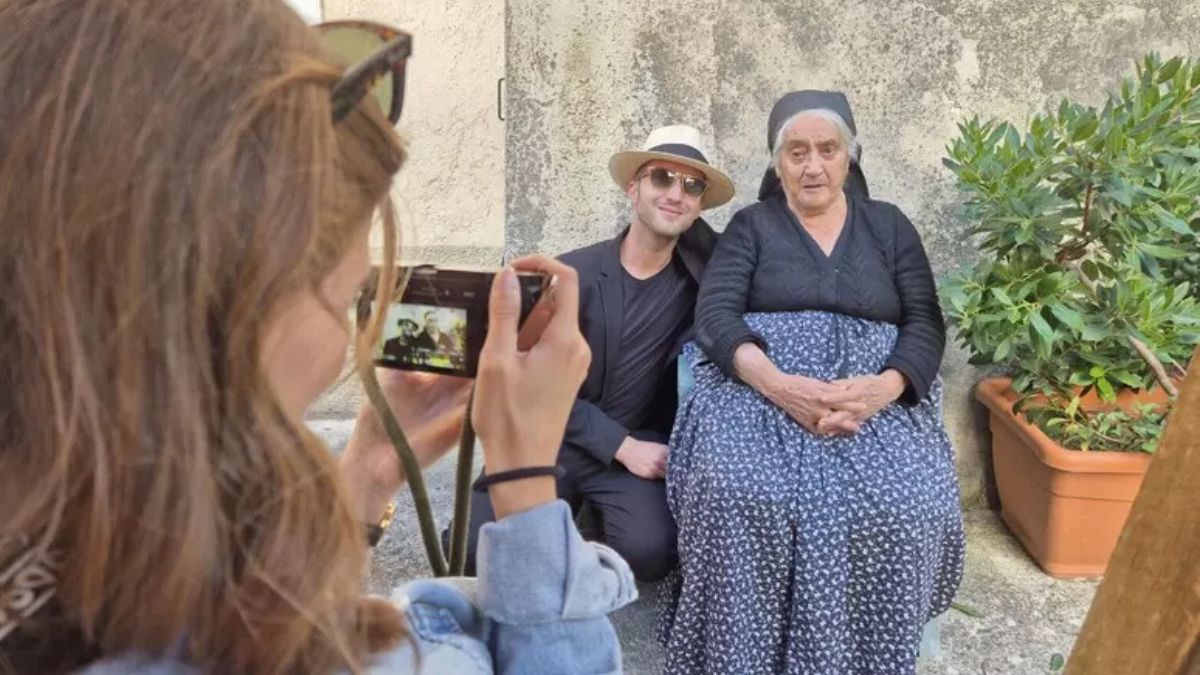In the heart of Scanno, a postcard-perfect village nestled in Italy’s Abruzzo mountains, lives 94-year-old Margherita Ciarletta. To most visitors, spotting her feels like stepping back in time.
Every day, without fail, she dresses in the same dark wool attire that generations of Scanno women once wore. Tourists now travel from far and wide, not just to admire the town’s famous lake or medieval churches, but to meet “Nonna Margherita,” or as locals call her, “L’Ultima Regina” — the Last Queen.
While Margherita insists she’s simply a grandmother proud of her village and her roots, she has become an unexpected symbol of living cultural heritage. Here’s a closer look at her story
Margherita’s signature outfit turns heads
Margherita has worn the same style of dark wool dress with long black sleeves and a cotton headband since she was 18. “I’ve always liked this dress, I am proud to wear it,” she told CNN.
For centuries, women in Scanno had two main types of wardrobe. One was the simple, practical outfit for daily work in the fields, the very dress Margherita continues to wear. The other was a more ornate costume, featuring a richly decorated bodice and hat, worn on Sundays and during festivals to reflect social status.
While a few local women still wear these festive garments for parades or celebrations, only Margherita continues to don the traditional everyday attire consistently. She alternates between several versions each week, some black, others dark blue with touches of white, never leaving her style behind, even on Sundays.
Impact Shorts
More Shorts“It never occurred to me to change my style, and no one forced me to. My husband, moreover, didn’t even appreciate it,” she told ANSA.
But that never stopped her. “My husband never liked it but that did not stop me from wearing it every day, both while working in the fields and during festivities,” she added.
Margherita wasn’t alone in keeping this tradition. Her sisters, Adelia and Anna, also wore the same outfit, but after their passing, she became the last woman in Scanno to live in traditional attire every day.
Word of her unique appearance gradually spread beyond the village and eventually reached social media. “Since I’m the last one wearing this costume, people come looking for an opportunity to shoot a photo with me,” she says. “But sometimes these tourists are too many, and it can be annoying.”
Local authorities are now advocating for the traditional costumes to be recognised by UNESCO as part of Italy ’s intangible cultural heritage.
Also read: Which countries have the most UNESCO World Heritage sites?
‘I miss some lost traditions’
Margherita was born in Scanno and has lived in the same stone house since 1950. Despite being 94, she remains fiercely independent—handling housework, cooking, gardening, and short walks without assistance.
In her younger years, she lived the rural life, tending sheep in mountain pastures, planting crops, collecting firewood, and helping maintain the family farm.
“Before we worked hard, now that work has ended. It was a tough life but we were all always together,” she told CNN. Back then, the village had a strong sense of community and tight-knit neighbourhood ties—many of which have now faded.
Scanno’s population has declined sharply over the decades, from over 4,000 in the 1920s to roughly 1,600 today. Many families moved to cities or abroad, including the United States, seeking better opportunities.
“I miss some lost traditions, I miss my husband who’s dead, and I miss when there were more people and neighbours and we were always eating together,” Margherita recalls. “I was never alone. Today I am sometimes alone.”
Also read: How are flamingos threatening Italy’s iconic risotto dish?
‘I enjoy being a grandmother’
Even with so much change around her, Margherita doesn’t dwell on the past. She enjoys the comforts of modern life and cherishes her role as a grandmother.
“I have a lot of spare time, there’s no fatigue, no bodily hardship like before. I enjoy being a grandmother, I’m happy with my life,” she said.
Her daily routine is quiet and steady. She wakes up after nine, enjoys warm milk prepared by her son, and spends time cooking traditional Scanno dishes, from macaroni to ‘cazzillitti.’
When her grandchildren visit, she delights in preparing handmade sfoglia pasta and gnocchi with turnip greens, a local Abruzzo speciality. In return, they help keep uninvited tourists at bay. “They’re wonderful, they constantly look after me. I’m very lucky to have them,” she says.
Margherita’s outlook on life is clear and unpretentious. She offers no advice to younger generations: “They won’t listen to you anyway. The secret to getting to my age? Only the good luck of the Lord.”
With input from agencies
)